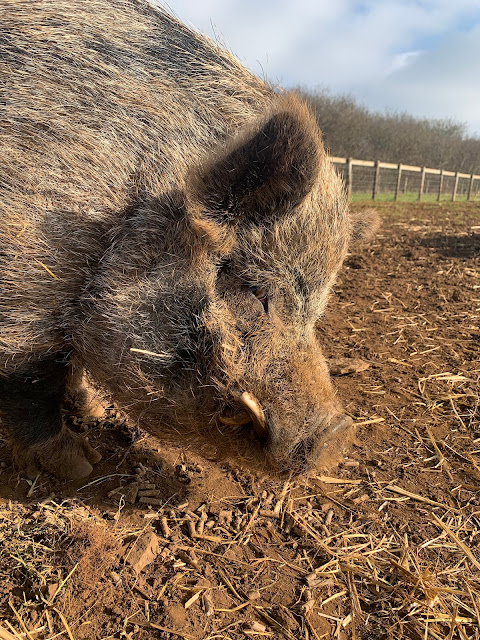Had a couple of Acleris sp in the moth trap at the Old Vic which I've had a go at identifying using a book (! almost forgot what one was!) -The Common Micro-moths of Berkshire by Nick Asher (an outstanding piece of work). I'm not sure if my CMR team will have any of my putative identifications though and they will probably insist that these Acleris go for gen dent.
It's half term and we have discovered a fresh hell - Fairytale Farm, where we took the kids yesterday. It will never cease to amaze me the weird and wonderful captive biodiversity in these family attractions- this time a breed of pig, the Mangalista which is a wild boar hybrid. Also secretly learnt the meaning of some dinosaurs scientific names.
Had a quick meeting with Nature Metrics here this morning looking into getting some e-DNA kits to help identify some of the species on our project sites which basically will never get round to identifying by sight such as micro-diptera and coleoptera and other micro organisms. That will be interesting to give that a go. They have a turn around time of 8 weeks which sounds good and can help across our projects here, in the Azores and Bulgaria.
My only other experience with DNA testing (apart from kids!) was when we sent a sample of a presumed Amur Stonechat that I found at Medmerry in 2020 off to Martin Collinson . After many months of of waiting they said they couldn't extract any DNA and on twitter one of Martin's team said 'you get what you pay for'. I would have been happy to pay and wouldn't really expect not to in a lot of cases so not sure what the attitude was for. I don't actually agree with the assumption that anything free is poor quality either as there is a lot of outstanding quality work in natural history that people produce for free and open source too. Basically I think anything you are producing should be the best possible quality whether freely or commercially distributed (we produce both here and there are often very good reasons why something should be free, subsidised or commercial)- what's the point of doing anything if you are not going to do it properly. Anyway hopefully dealing with a commercial company will be a better experience and worth paying for. I recommended they get into charging birders for quick turn around DNA identifications and they said they will look into it- certainly a small niche there- I would happily have paid £150 or so to get an eight week response on that Stonechat. Also lastly on this tangent, when the 2020 BB rare bird report came out they even missed the Stonechat record out (Collinson and BB are same crowd of British birding traditional establishment). It wasn't even down as an Eastern Stonechat and when I chased up they said it was a mistake and they lost the record. Good job I don't find many rare birds in Britain because in my limited experience it's a shambles. Roll on commercial DNA birding results and the Ebird and Ebird validators takeover:-)










No comments:
Post a Comment